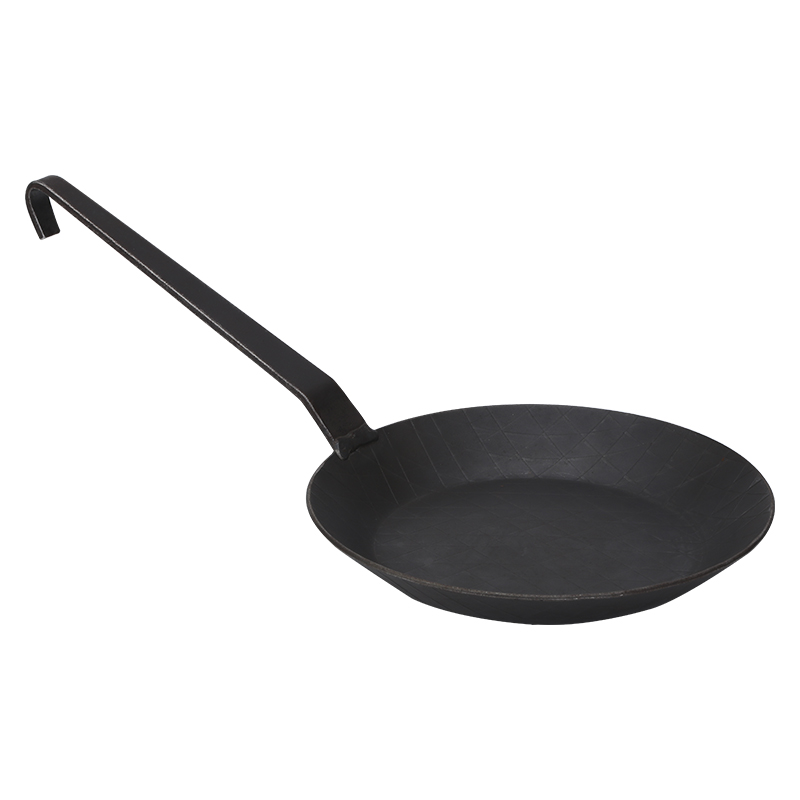Fry pans also known as skillets, are an essential tool in every kitchen. Whether you're a professional chef or a home cook, a high-quality fry pan can significantly enhance your cooking experience. From searing meats to sautéing vegetables, fry pans are versatile and indispensable. This guide will help you understand the different types of fry pans, their uses, and how to choose the best one for your needs.

Stainless steel fry pans are known for their durability and resistance to rust and corrosion. They are excellent for browning and searing due to their ability to withstand high temperatures. Stainless steel pans often come with an aluminum or copper core to improve heat conductivity.
Non-stick fry pans are coated with a material such as Teflon, which prevents food from sticking. These pans are perfect for cooking delicate foods like eggs and fish. They require less oil, making them a healthier option. However, they must be used with care to avoid scratching the non-stick surface.
Cast iron fry pans are renowned for their heat retention and even cooking. They can go from stovetop to oven, making them versatile for various cooking techniques. While they require seasoning and proper maintenance to prevent rust, their durability and cooking performance are unmatched.
Ceramic fry pans offer a non-stick surface without the use of chemicals like Teflon. They are often considered a healthier alternative and are safe for high-heat cooking. However, they can be more prone to chipping and may not be as durable as other types.
Carbon steel fry pans are similar to cast iron in terms of heat retention and durability but are lighter and easier to handle. They require seasoning to maintain their non-stick properties and prevent rust. Carbon steel pans are favored by professional chefs for their versatility and performance.
The material and construction of a fry pan significantly impact its performance and durability. Consider whether you need a pan for high-heat cooking, even heat distribution, or non-stick convenience. Each material has its advantages and trade-offs.
Fry pans come in various sizes, typically ranging from 8 to 14 inches in diameter. The right size depends on your cooking needs and the number of servings you prepare. Additionally, consider the weight of the pan; heavier pans provide better heat retention but can be more challenging to handle.
A well-designed handle is crucial for safety and comfort. Look for fry pans with handles that stay cool during cooking and provide a secure grip. Some pans feature helper handles, which are small handles on the opposite side of the main handle, making it easier to lift heavy pans.
Heat conductivity determines how quickly and evenly a pan heats up. Copper and aluminum cores are excellent conductors of heat and are often incorporated into stainless steel pans to enhance their performance. Non-stick and ceramic pans may have less efficient heat conductivity but offer other benefits like easy food release.
If you plan to use your fry pan in the oven, check its oven-safe temperature rating. Cast iron and some stainless steel pans can withstand high oven temperatures, making them versatile for recipes that require stovetop-to-oven transitions.
Proper cleaning is essential to maintain the longevity and performance of your fry pan. Stainless steel and cast iron pans can be scrubbed with a brush, while non-stick and ceramic pans require gentler cleaning to avoid damaging the surface. Avoid using metal utensils on non-stick surfaces to prevent scratches.
Seasoning is the process of applying a thin layer of oil to the surface of cast iron and carbon steel pans and heating them to create a natural non-stick coating. This process also helps prevent rust. Regular seasoning enhances the pan's performance and extends its lifespan.
Proper storage prevents damage and prolongs the life of your fry pans. Use pan protectors or place a paper towel between stacked pans to avoid scratching non-stick and ceramic surfaces. Hanging pans by their handles can also save space and keep them easily accessible
.
All-Clad is renowned for its high-quality stainless steel cookware. Their fry pans feature a tri-ply construction with an aluminum core for excellent heat conductivity. All-Clad pans are durable and favored by professional chefs and home cooks alike.
Lodge is a leading brand for cast iron cookware. Their cast iron fry pans are pre-seasoned and ready to use, offering superior heat retention and versatility. Lodge pans are a staple in many kitchens for their reliability and performance.
T-fal is well-known for its affordable and high-performing non-stick cookware. Their fry pans feature a durable non-stick coating and are designed for easy food release and cleanup. T-fal pans are a great choice for those seeking convenience and value.
Le Creuset offers premium ceramic cookware. Their fry pans are available in vibrant colors and feature excellent heat retention and distribution. Le Creuset pans are prized for their aesthetic appeal and cooking performance.
Choosing the perfect fry pan involves considering various factors such as material, size, handle design, and maintenance requirements. Whether you prefer the durability of stainless steel, the convenience of non-stick, or the versatility of cast iron, there is a fry pan to suit every cooking style and need. Investing in a high-quality fry pan will elevate your culinary creations and enhance your overall cooking experience.
Previous: Fresh Bamboo Leaves for Sushi: How to Use and Benefits
Next: Air Mattress With Built In Electric Pump Portable Inflated Bed
Copyright:@2020-2021
Comments Please sign in or sign up to post.
0
0 of 500 characters used